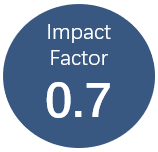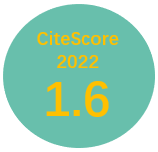The 7 challenges of road management towards sustainability and development
Vol 4, Issue 2, 2020
VIEWS - 1131 (Abstract) 1911 (PDF)
Abstract
The expansion of road networks, taken place during the last decades, was driven by technological progress and economic growth. The most innovative products of this trend—modern motorways and international road corridors—provide an excellent level of service, traffic safety and necessary information to travelers. However, despite this undeniable progress, major impediments and respective challenges to road authorities and operators still remain. The present paper analytically presents the main current challenges in the road engineering field, namely: a) financing new projects, b) alternative energy resources, especially renewable energy, c) serviceability, including maintenance of road infrastructure, traffic congestion and quality of the network, d) climate change hazards due to greenhouse gas emissions increase, e) environmental impacts, f) safety on roads, streets and motorways, and g) economy and cost-effectiveness. In each country and over each network, challenges and concerns may vary, but, in most cases, competent authorities, engaged in road development policies, have to deal with most of these issues. The optimization of the means to achieve the best results seems to be an enduring stake. In the present paper, the origin and the main features of these challenges are outlined as well as their tendency to get amplified or diminished under the actual evolving economic conditions worldwide, where growth alternates with crisis and social hardship. Moreover, responses, meant to provide solutions to the said challenges, are suggested, including research findings of Aristotle University and innovative technological achievements, to drive the transition to a more sustainable future.
Keywords
Full Text:
PDFReferences
Barkas DA, Psomopoulos CS, Papageorgas P, Kalkanis K, Piromalis D and Mouratidis A (2019). “Sustainable energy harvesting through triboelectric nano-generators: A review of current status and applications”. Energy Procedia, 157: 999–1010. https://doi.org/10.1016/j.egypro.2018.11.267.
Boehler-Baedeker S and Hueging H (2012). GIZ Sourcebook on Urban Transport and Energy Efficiency. Eschborn, Germany: German Cooperation Agency (GIZ).
Campbell M, Alamgir M and Laurance W (2017). “Optimising future tropical roads: Examining the economic benefits and environmental costs of roads in the Asia-Pacific”. Australian Wildlife, 1: 26–29.
European Commission (2014). “Quality of transport”. EC Report, Special Eurobarometer 422a. Brussels, Belgium: European Commission.
_____ (2017). EU Transport in Figures—Statistical Pocketbook 2017. Brussels, Belgium: European Commission.
European Environment Agency (2014). “Green infrastructure and flood management—Promoting cost-efficient flood risk reduction via green infrastructure solutions”. EEA Report No. 14. København, Denmark: European Environmental Agency.
_____ (2015). “Evaluating 15 years on transport and environmental policy integration”. EEA Report No. 7/2015.København, Denmark: European Environmental Agency.
_____ (2017). Approximated European Union Greenhouse Gas Inventory: Proxy GHG Emission Estimates for 2016. København, Denmark: European Environmental Agency.
Federal Highway Administration (FHWA) (2002). “Recycled materials policy”. Information Note 2002. Washington, DC: FHWA.
_____ (2015). “Feasibility and implications of electric vehicle (EV) deployment and infrastructure development”. Final Report FHWA-HEP-15-021. Washington, DC: FWHA.
Goetz A (2011). “The global economic crisis, investment in transport infrastructure and economic development”. In Button K and Reggiani A (Eds.), Transportation and Economic Development Challenges. Cheltenham, UK and Northampton, MA, USA: Edward Elgar, 42–71. https://doi.org/10.4337/9780857930637.00008.
Kehagia F (2008). “Skid resistance performance of asphalt wearing courses with electric arc furnace slag aggregates”. Waste Management Research, 27: 288–294. https://doi.org/10.1177/0734242X08092025.
_____ (2014). “Construction of an unpaved road using industrial by-products”. WSEAS Transactions on Environment and Development, 10: 160–168.
Marinelli M, Petroutsatou K, Fragkakis N and Lambropoulos S (2018). “Rethinking new public infrastructure value for money in recession times: The Greek case”. International Journal of Construction Management, 18(4): 331–342. https://doi.org/10.1080/15623599.2017.1358131.
Mouratidis A (2019). “Smart technologies in road asset management”. Proceedings 18th MASE Symposium.
Mouratidis A and Kehagia F (2018).“Impact of climate hazard on roads: Risk assessment and proactive measures”.Proceedings 9th European Road Congress.
Mouratidis A and Pernientaki I (2018). “Engineering assessment of a local road constructed from bauxite residue”. 9thInt. Conf. on Waste Management and the Environment, 101–109. https://doi.org/10.2495/WM180101.
Oh J-S, Oh C, Ritchie SG and Chang M (2005). “Real-time estimation of accident likelihood for safety enhancement”. Journal of Transportation Engineering, 131(5): 358–363. https://doi.org/10.1061/(asce)0733-947x(2005)131:5(358).
Rodrigue J-P, Comtois C and Slack B(2017). The Geography of Transport Systems. 5th Ed. New York, NY: Routledge.
Tsohos G and Mouratidis A (2002). “Effective utilization of fly ash in road construction”. Proc. 4th BITMAT, 181–185. https://doi.org/10.1201/9780203743928-24.
United Nations Economic and Social Commission for Asia and the Pacific (ESCAP) (2008). A Primer to Public-Private Partnerships in Infrastructure Development. Bangkok, Thailand: UN ESCAP.
World Health Organization (2015). Global Status Report on Road Safety 2015. Geneva, Switzerland: World Health Organization.
World Road Association (2014). “Alternative solution for fossil fuels for the road system”. Technical Report 2014R01EN. Paris, France: World Road Association.
_____ (2016a). “Preserve your country’s roads to drive development”. Technical Report 2016R07EN. Paris, France: World Road Association.
_____ (2016b). “Transport strategies for climate change mitigation and adaptation”. Technical Report 2016R25EN. Paris, France: World Road Association.
DOI: https://doi.org/10.24294/jipd.v4i2.1174
Refbacks
- There are currently no refbacks.
Copyright (c) 2020 Anastasios Mouratidis

This work is licensed under a Creative Commons Attribution-NonCommercial 4.0 International License.

This site is licensed under a Creative Commons Attribution 4.0 International License.










